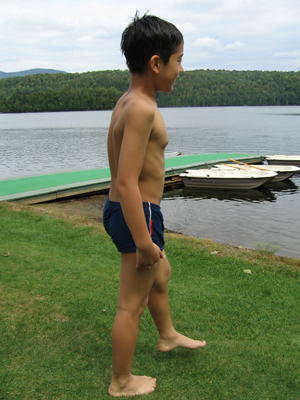
seniors receive a great deal of help from rolfing as it loosens connective tissues that have hardened, thickened and dehydrated as a result of simply living life (and the habits of sitting, standing, walking).
by Deanna Melnychuk —
Although rolfing is a modality that has been in use for years, misperceptions still abound. The following are answers to commonly asked questions about rolfing.
Q: Is rolfing important for everyone or does it only benefit those who have been in an accident or had surgery?
A: While rolfing is extremely beneficial for those who have had an accident or surgery at any time in the past, it also improves posture, enhances athletic performance, creates more flexibility and better coordination, and improves the body’s ability to cope with stress. Rolfing usually is offered in a 10-session series. For those whose body has been injured, 10 sessions may be needed to maintain the lightness and sense of well-being that rolfing creates.
Q: Do children and seniors need rolfing?
A: Look at the way your child walks and moves. Is he pigeon-toed? Does she have knock-knees? Are his feet turned out like a duck’s? Does she carry her head forward and have a swayback? If you answered “yes” to any of these questions, your child needs rolfing. Children’s sessions are usually shorter (one hour instead of one hour and 15 minutes), and for children younger than 12, the price is generally lower as well. By the way, if you match any of those descriptions yourself, it is not too late for you to participate in the rolfing series. In fact, it is extremely important that you do so for your continued commitment to good health.
Seniors (past 65) also can improve their health, and need not be “stuck” with aches and pains. In fact, seniors receive a great deal of help from rolfing as it loosens connective tissues that have hardened, thickened and dehydrated as a result of simply living life (and the habits of sitting, standing, walking). Also, many seniors wish to be active in sports, such as golf, yet find their flexibility is less than it needs to be or that they tire easily. Rolfing helps identify old patterns that are no longer viable. The rolfer, using movement techniques and cues, encourages new patterns as well as changes the physical structure through touch.
Q: How long is a rolfing series?
A: That is entirely up to you, in consultation with your rolfer. One suggestion is a session every two to three weeks. This allows time between the sessions for integration of the structural work and practice of the movement cues. Some people prefer the alternative of one session per week. You will know what is best for your body after one or two sessions.
Q: When should I start?
A: Now is the time!
Deanna Melnychuk, B.Sc., is a certified advanced rolfer and rolfing movement practitioner, licensed massage therapist, Reiki Master, CranioSacral therapist and reflexologist. 602-404-8685.
Reprinted from AzNetNews, Volume 25, Number 2, April/May 2006.





March 3, 2013
Bodywork, Family, Children, the Elderly and Pets, Pain, Rolfing, Stress, Trauma